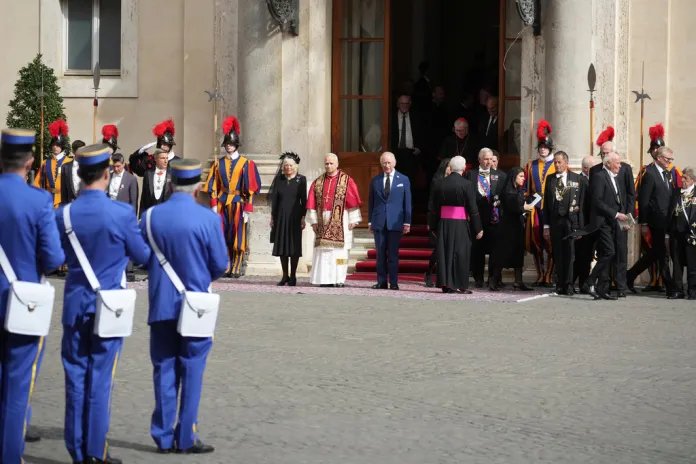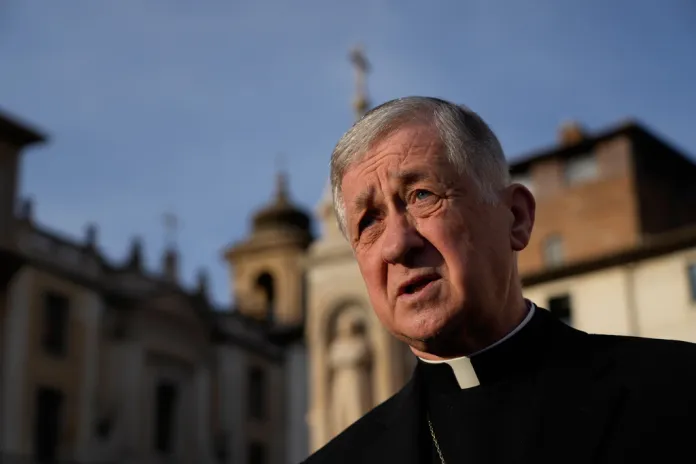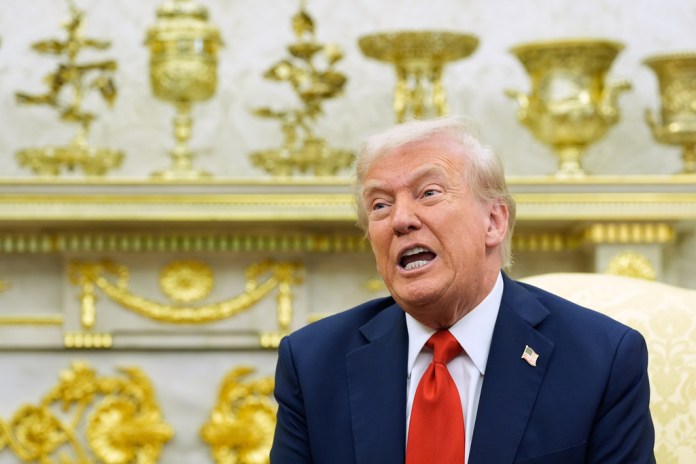From the Middle Ages to Modern Conflicts: Pope as peacemaker
The article discusses Pope Leo XIV’s role as a potential mediator in international conflicts,especially his willingness to facilitate peace talks regarding the Russian invasion of Ukraine,amid encouragement from Western powers and openness from Ukrainian President Volodymyr Zelensky. The piece traces the past context of the Vatican’s mediation efforts, highlighting its long-standing tradition as a peacemaker since the Middle Ages through various conflicts, including World War I and II.
Ambassadors and diplomats from affected nations,including Ukraine,see the Vatican as a symbol of moral authority. However, the Kremlin has expressed reluctance over collaborating on a religious platform due to its Orthodox ties. The article further outlines previous instances where papal mediation succeeded in achieving peace and reflects on the Vatican’s commitment to act as a humanitarian facilitator in ongoing global disputes.
Pope Leo XIV, recognizing the importance of international cooperation, is poised to engage in these diplomatic efforts, continuing the Vatican’s mission of resolving conflicts and promoting peace globally, as encapsulated in his statement regarding the need for multilateral diplomacy.
From the Middle Ages to Modern War: Pope as preeminent peacemaker
Pope Leo XIV is being pushed by Western powers to mediate an end to the Russian invasion of Ukraine.
It’s a responsibility that the pontiff is eager to take on and Ukrainian President Volodymyr Zelensky is signaling openness to the idea.
“The Vatican is a symbol of the highest morality of free Western democratic civilization,” Ukrainian Ambassador to the Holy See Andrii Yurash told the Washington Post. “There is no doubt it will be of great moral value.”
The Kremlin, on the other hand, is reticent to meet a fellow Orthodox nation in the heart of the Catholic Church.
“Imagine the Vatican as a venue for negotiations. It would be a bit inelegant for Orthodox countries to use a Catholic platform to discuss issues on how to remove the root causes [of the conflict],” said Russian Foreign Minister Sergei Lavrov. “I do not think it would suit the Vatican itself to host delegations from two Orthodox countries in these circumstances.”
The Vatican would beg to differ — since the Middle Ages, the Holy See has positioned itself as the preeminent mediator for international conflicts regardless of spiritual or temporal allegiances, though to varying levels of success.
An early example of this role was the Peace and Truce of God, an informal treaty developed and proclaimed by the Catholic Church between 989 and 1027. It was among the first examples of large-scale peace agreements in Western history.
The Peace and Truce movement — which encouraged peace between the belligerent armies of feudal states and established basic rules of war — gave birth to legal concepts such as protections for non-combatants, sanctuary from violence, and suspension of hostilities on days deemed sacred.
These legal doctrines expanded and morphed over centuries and eventually the basic ideas were diffused into various regional authorities without the enforcement of the Holy See, but would not have been possible without the moral authority of the papacy.
This role continues to develop into the modern day.
Throughout World War I, Pope Benedict XV attempted to bring all involved parties into an agreement that sought “peace without victory” and prioritized the well-being of the general public.
An unsuccessful proposal from the Vatican in 1917 sought to immediately end hostilities and establish multilateral institutions to diplomatically carry out the division of territory. It also called for a reduction in armaments and a ban on demands for indemnities.
The potential for any “papal peace” was particularly undercut by the Italian government, which foresaw such efforts and specifically wrote the Holy See out of future peace negotiations in the 1915 Treaty of London.
In World War II, the Holy See once again declared itself entirely neutral from the beginning, but Pope Pius XII expressed early disillusionment with his role as an advocate for peace.
“Terrible news comes to Us that the dread tempest of war is already raging despite all Our efforts to avert it,” the pope wrote in his first encyclical, Summi Pontificatus. “When We think of the wave of suffering that has come on countless people who but yesterday enjoyed in the environment of their homes some little degree of well-being, We are tempted to lay down Our pen.”
Pius XII spent the war coordinating humanitarian and diplomatic efforts spread across the world aimed at alleviating suffering and counter-signaling racial or nationalistic hatred. These movements were typically driven underground due to distrust from governments that saw the Catholic Church as a possible fifth column.
During the pontificate of Pope John XXIII, the Holy See was made aware of the then-developing Cuban Missile Crisis by the administration of President John F. Kennedy — the first Catholic leader of the United States.
Recognizing the potential for a catastrophic nuclear conflict, the pope drafted a short message addressed to the governments of the world pleading for leaders to “spare the world from the horrors of a war whose terrifying consequences no one can predict.”
The next day, the Soviet state newspaper Pravda carried the pope’s opening words as its headline: “We beg all governments not to remain deaf to this cry of humanity.”
Pope John XXIII’s intervention gave Soviet Prime Minister Nikita Khrushchev, an avowed atheist who expressed public contempt for the Holy See, a convenient moral footing for pulling his nation’s vessels away from the U.S. blockade, ending the stand-off without losing face.
The Vatican chalked up another major win in its handling of the Beagle conflict, a dispute between Argentina and Chile over a series of island territories claimed by both nations.
In 1978, Pope John Paul II stepped in to stop a full-scale Argentinian invasion of Chile just hours before it was conducted.
Both sides signed an agreement that accepted the “noble initiative” of the Holy See to “contribute to the achievement of a peaceful settlement of the dispute.”
A formal end to the conflict was agreed upon and signed at the Vatican in 1985.
In recent years, the tradition of papal neutrality and role as universal mediator has continued.
Ukrainian officials attribute Cardinal Matteo Zuppi, a peace envoy sent by Pope Francis early in the Russian invasion of Ukraine, with securing the prisoner exchanges through talks with the Kremlin.
Pope Francis immediately offered himself as a mediator to resolve the war between Israel and Hamas following the Oct. 7 terrorist attacks. His offer was ignored by the Israeli government, but the pontiff called the only Catholic parish in the Gaza Strip each night to check in on them and assure they remained safe.
He was praised for his personal investment in the conflict by Latin Patriarch of Jerusalem Pierbattista Pizzaballa, who himself offered to be traded for the safe return of hostages taken by Hamas. That offer was similarly ignored.
Colombian President Gustavo Petro is currently seeking Pope Leo XIV to help him address the growing threat of the National Liberation Army, a guerrilla rebel army that adheres to the novel ideology of “Catholic Marxism.”
“I spoke with the Pope about what can be done for the Vatican to hold the new peace talks,” Petro said after meeting with Leo XIV earlier this week.
It is a request that Pope Leo XIV is likely to fulfill if it is within his power, having previously acknowledged the “need to give new life to multilateral diplomacy and to those international institutions conceived and designed primarily to remedy eventual disputes within the international community.”
KREMLIN SAYS VATICAN SHOULDN’T HOST PEACE TALKS DUE TO RELIGIOUS DIFFERENCES
“Papal diplomacy is an expression of the very catholicity of the Church. In its diplomatic activity, the Holy See is inspired by a pastoral outreach that leads it not to seek privileges but to strengthen its evangelical mission at the service of humanity,” Leo XIV told the diplomats. “Resisting all forms of indifference, it appeals to consciences.”
When blood is being spilled, the Holy See offers itself unconditionally to aid in ending the violence — whether that means bringing outsiders to Rome or sending envoys abroad.
But the Holy See can only help those who are willing to have them.
" Conservative News Daily does not always share or support the views and opinions expressed here; they are just those of the writer."




